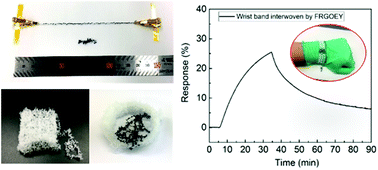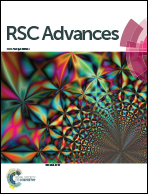Highly stretchable, mechanically stable, and weavable reduced graphene oxide yarn with high NO2 sensitivity for wearable gas sensors†
Abstract
Stretchable gas sensors are important components of wearable electronic devices used for human safety and healthcare applications. However, the current low stretchability and poor stability of the materials limit their use. Here, we report a highly stretchable, stable, and sensitive NO2 gas sensor composed of reduced graphene oxide (RGO) sheets and highly elastic commercial yarns. To achieve high stretchability and good stability, the RGO sensors were fabricated using a pre-strain strategy (strain-release assembly). The fabricated stretchable RGO gas sensors showed high NO2 sensitivity (55% at 5.0 ppm) under 200% strain and outstanding mechanical stability (even up to 5000 cycles at 400% applied strain), making them ideal for wearable electronic applications. In addition, our elastic graphene gas sensors can also be woven into fabrics and clothes for the creation of smart textiles. Finally, we successfully fabricated wearable gas-sensing wrist-bands from superelastic graphene yarns and stretchable knits to demonstrate a wearable electronic device.



 Please wait while we load your content...
Please wait while we load your content...